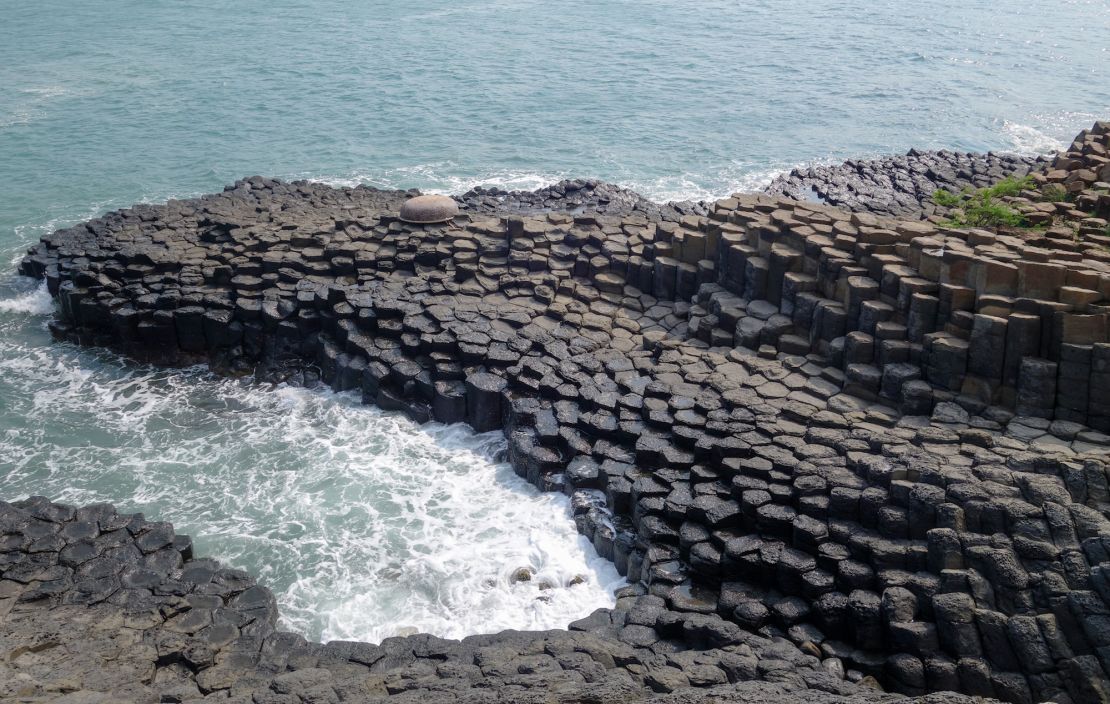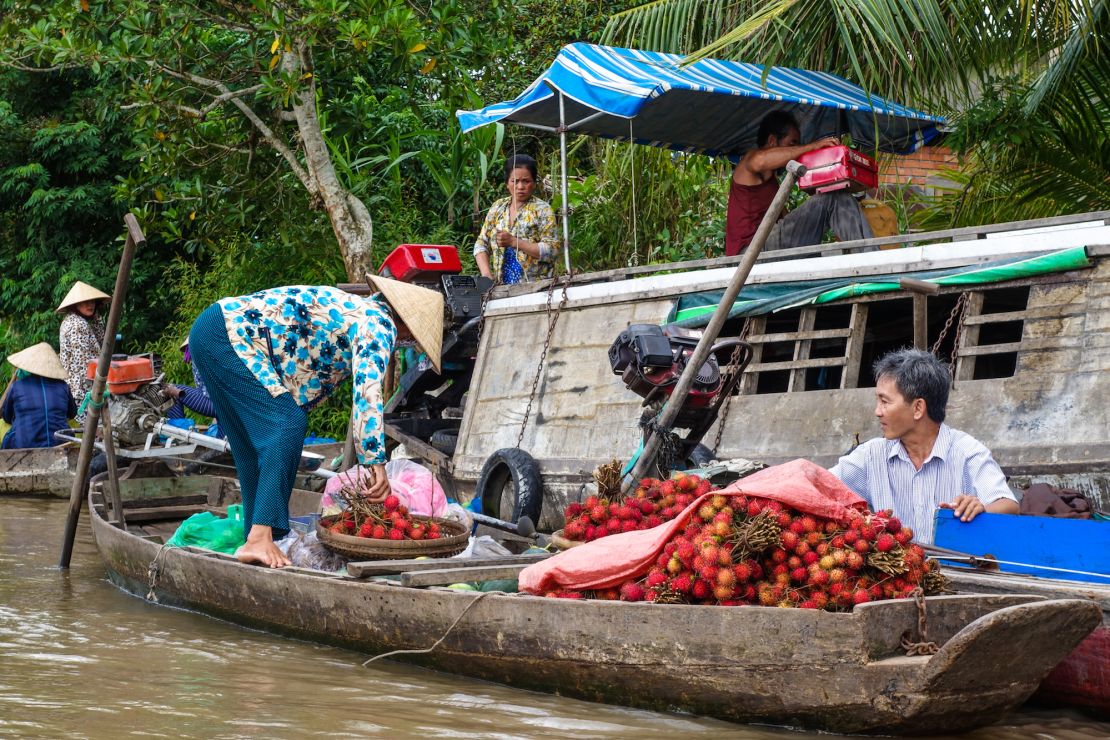Editor’s Note: CNN Travel’s series often carries sponsorship originating from the countries and regions we profile. However, CNN retains full editorial control over all of its reports. Read the policy.
Story highlights
Motorcycle tourism is on the rise in Vietnam
Despite being less popular, Vietnam's north offers a majestic mountainous ride
Vietnam is a nation that moves on two wheels. A 200,000-kilometer road network connects cities with farming villages, beach resorts to mountain escapes and dense jungles to a jagged coastline.
Over 37 million scooters snake their way from the Mekong Delta in the south to the snow-dusted peaks on the Chinese border. It’s the favored mode of transport for the 90 million people that call Vietnam home, and tourists are catching on.
The country sees almost 8 million visitors every year, and recently a new type of traveler has started arriving – motorcyclists. A popular travel route connecting Hanoi to Ho Chi Minh City has developed, with riders seeking history and culture to accompany adventure.
Mechanic shops and backpacker hostels now fix and flip bikes by the hundreds to fearless foreigners. Intrigued, I ended up in Vietnam with my own two wheels. With no time frame and a curious desire to explore, I rode 10,000 kilometers. Here are a few of the highlights and destinations along the way:
In search of the perfect ride
Hanoi, the bustling capital, is the beginning for most motorcyclists in Vietnam. Some riders seek out the services of reputable companies such as Flamingo Travel, Cuong’s Motorcycle Adventures and FlipSide Tours, while young backpackers scour the streets in search of cheap, Chinese-built bikes.
But while many purchase a motorcycle and head directly south, those in the know head north, aiming for Vietnam’s majestic mountains.
Vietnam’s majestic north
Offering an idyllic farming lifestyle, peaceful Mai Chau is an enchanting first stop on the northern loop before continuing toward the golden rice terraces in Nghia Loa, Than Uyen and Sapa.
Home to the country’s highest summit and gateway to the Hoàng Liên Son mountain range, Sapa has been a tourist hotspot for years. Most riders find themselves here for at least a night to enjoy cultural home stays with the Hmong people.
Farther north, the real adventure begins, with a ride to Ha Giang via the ethnic markets in Bac Ha. Sizable Ha Giang is the entrance to the Dong Van Karst Geopark, a mountainous landscape on the border of China that requires special permits to visit.
Arguably the most exquisite terrain in the entire country, the drive to Dong Van and onward to Bao Lac is home to 17 minority groups, beehive-like peaks and the deepest canyon in Southeast Asia, Ma Pi Leng. Temperatures can plummet in these mountains and the rough roads can leave the body bruised and shaken, but the discomfort is canceled out by the thrill of experiencing Vietnam’s most epic panoramas.
Beyond the caves of Phong Nha
Some 560 kilometers south of Hanoi lies a cave system that has kick-started the development of tourism in a region that was once one of the poorest in the nation.
Phong Nha-Ke Bang National Park is best known for the recent discovery of the largest cave in the world, Hang Son Doong, and adventurers have since been flocking to the park and its bucolic village Phong Nha in droves. But there is more to the town than just the colossal caves.
Set between glorious rice paddies and stunning karst mountains, Phong Nha and its amicable locals are so captivating that I decided to hang up my helmet and call it home for three months after first riding through.
The “Cave Kingdom” has gone from relative obscurity to being one of the most visited tourist destinations in all of Southeast Asia. Enterprising locals have capitalized on Phong Nha’s newfound fame and created a slew of fascinating excursions.
Passionate local and community manager Dzung Le has set up new trekking and camping tours that highlight the best Phong Nha has to offer.
Hai Nguyen, owner of the popular Bamboo Café, runs an excellent eco tour.
“Conservation is not just about raising awareness to protect the forest,” says Hai. “It is also about creating new long-term opportunities for the villagers. With more people showing an interest in the tour and the environment, more jobs are being created for the local people.”
Beyond the caves, Phong Nha is a blissful oasis, tranquil without being sleepy, and destined to be the real highlight of any Vietnam journey.
Navigating the Ho Chi Minh Trail
One of the greatest military achievements of the 20th century winds its way through the dense forests of Central Vietnam. During the Indochina and Vietnam Wars, a series of paths connected the powers in the north with the soldiers in south. Collectively known as the Ho Chi Minh Trails, they were an entire system of hidden transport routes that crossed through the jungles, over borders and even out to sea.
Today, the sealed Ho Chi Minh Highway follows the inland passage through some of the country’s deepest jungle. Most motorcyclists choose to follow this route, and the Western Ho Chi Minh Highway is the most fabled section of all.
From Phong Nha, the road cuts through the canopy, offering 240 kilometers of twisting, narrow pavement. Only a handful of settlements are scattered along the way, making this one of the most remote trips in the country.
The highway ends at historic Khe Sanh, the location of an infamous battle during the Vietnam War. A visit to the open-air museum, scattered with tanks, vehicles and aircraft from the war is an integral part of the journey.
This day’s ride requires extra concentration and preparation. A breakdown or accident here could result in hours without seeing another person. But, ultimately, that just adds to the appeal.
Fishing villages and coastal delights

A first-timer to Vietnam can be forgiven for looking at a map and assuming the best scenery will be found on Highway 1. While appearing to hug the coast, the reality is that this road is treacherous and in constant disrepair.
However, there are stretches of coastal splendor that can be enjoyed with enough research.
The renowned Hai Van Pass, made famous in an episode of “Top Gear,” winds between the cities of Hue and Da Nang, with pillboxes giving a historical element to complement the ocean vistas.
To avoid the stream of tourists plying this pass, venture farther south to Chi Thanh. Here lies Ganh Da Dia, Vietnam’s own Giant’s Causeway, and an extraordinary ocean ride that ends in Quy Nhon. Riders rarely traverse these paved roads that connect fishing villages with rice fields.
Highway 1 roars only kilometers farther inland, but here wandering buffalo will be your main hazard. A few days of palm-shade repose at the legendary Jungle Beach will prepare the body for the final stretch.
Floating Markets of the Mekong Delta

The Mekong River flows 4,350 kilometers (about 2,700 miles) from its origins in the Himalayas through seven countries, eventually spilling into the South China Sea.
Riding south from Ho Chi Minh City leads to the pulsating Mekong Delta. Teeming with wildlife and lush mangroves, here the locals live in harmony with the mighty river. The delta forms a labyrinth of narrow alleys that are best explored by boat. In the larger sections, vendors sell fresh produce and fish from their vessels in charismatic floating markets.
A loop back toward Ho Chi Minh City signs off the final chapter of this motorcycle journey. Once know as Saigon, the city is filled with a new batch of eager motorcyclists, also searching for their perfect ride.
Over pho and iced coffee, stories are traded and keys exchanged. Soon they, too, are ready to head north and discover the wonders that make up this magnificent country.
Before you go
The potential for danger on trip of this nature cannot be discounted. The roads are unfamiliar and often in shambles, and the riding style of locals can be described as haphazard at best. It’s all too common to see young, inexperienced riders sporting a pair of sandals and no helmet, turning a blind eye to the other riders they meet wrapped in bandages from their accidents.
Before tackling Vietnam on two wheels, consider the risks and invest in protective equipment. Still, for those with the skills, good judgment and a sense of adventure, the trip will go down as one of life’s most thrilling and educational journeys.
Jarryd Salem is a freelance travel writer who has been exploring the world since 2007. More of his stories can be found at Nomadasaurus.com.

















